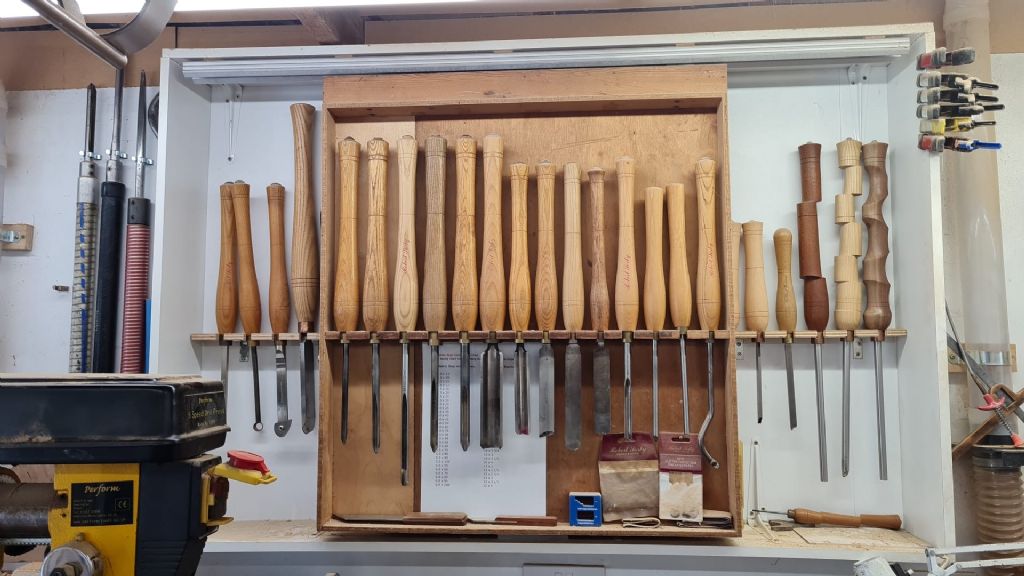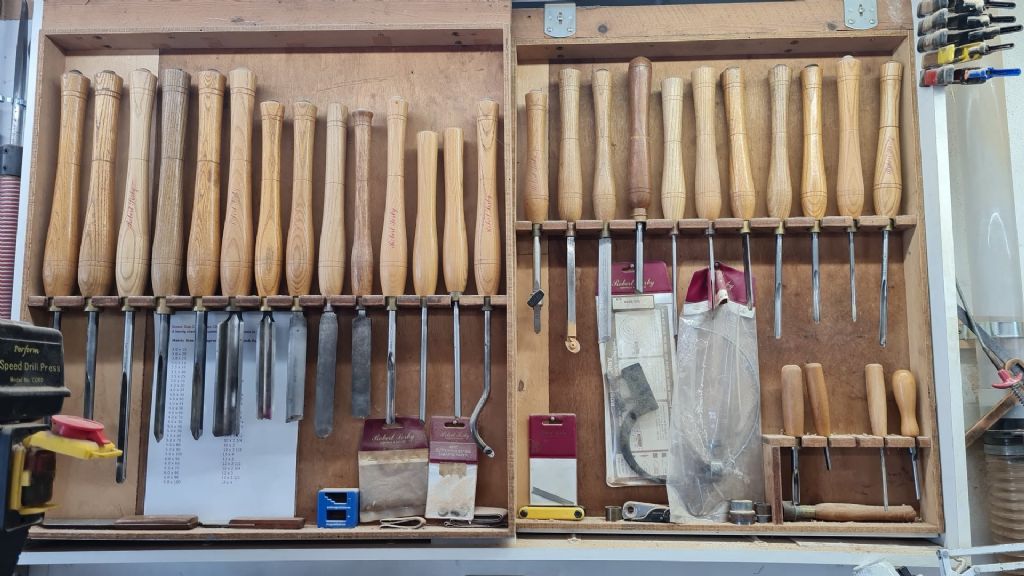One of my old magazines has a photo of a Myford built into a home-made cabinet like a writing desk, where the top and front panel hinge open to reveal the lathe and form a small bench. Drawers underneath, I think Hollowpoint's Bisleys would be better. Unlike a real writing desk, the frame was heavy timber, probably 2×4, to keep it rigid, and it may have been bolted to the wall.
If you can, store materials and infrequently used tool somewhere else! Oily metal under the marital bed is rarely acceptable, but maybe one of those Garden Storage box thing outside.
Like Nick, my workshop shares space with ladders and other DIY necessities. Fitting it all in was going to be a challenge. So I sat down with a sheet of squared paper scaled to map the available space, marked up it up with avoid areas like windows, doorways and light fittings, and then cut out scale rectangles representing the bench, lathe, mill, self and power saw (the last is important: hand-sawing can ruin the hobby because it's tedious and exhausting. Ask about saws in another question – there are options!)
Then I moved the bits of paper about, looking for fits. Having found a candidate layout, check it for gotchas. For example, mounting a lathe with its headstock tight into a corner means you can't put long stock through the spindle, have blocked access to the gear-change banjo needed for threading, and can't fit a hand-crank (useful for threading on a small lathe.) Tailstock end in a corner is mostly safe! Milling machines need more space than is obvious. because their tables move a fair distance sideways.
Another thing to watch is the space needed to install machines in the first place. A flat run through a big garage door makes it easy to move heavy equipment with an engine crane, but once inside the engine crane needs space to turn. I hot it wrong by forgetting a load of junk was stacked against the wall, so the crane couldn't complete a 90° turn. Luckily I had a Plan B!
Check out weights and sizes, for example the short bed SC3 is 40kg and the long bed model 50kg, both top-heavy. Next size up, an SC4, is 95kg, or a WM250 at 125kg. Smaller lathes and mills can be lifted by a single fit individual, but beware – machine tools are awkward, unbalanced and top-heavy. More difficult than lifting the same weight in a gym. On the other hand, an SC3-sized mini-lathe is an easy two man lift, even if both are weeds, but only if they have room to manoeuvrer. Usually best to install the most awkward items first because every addition reduces manoeuvring space.
All do-able, because heavy weights can be managed with rollers and other tricks of the trade, but trickier to do in a tight space than an empty warehouse. Especially if moving the machine from front-door into the cubby-hole scuffed SWMBO's new carpet, or squashed her cat, or otherwise enraged the boss. The execution may need some thought – as they teach in the Army, "Prior Planning Prevents Piss-poor Performance".
Have you thought of writing it up as a magazine article? How people manage in a small space is always interesting.
Dave
 File Handle.
File Handle.






